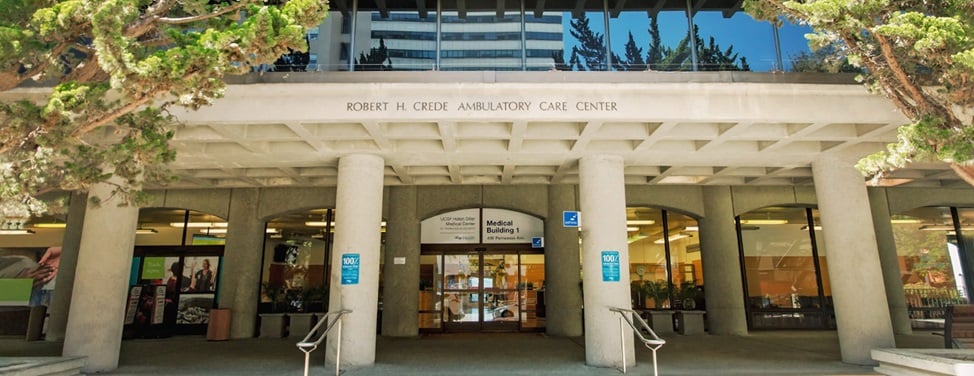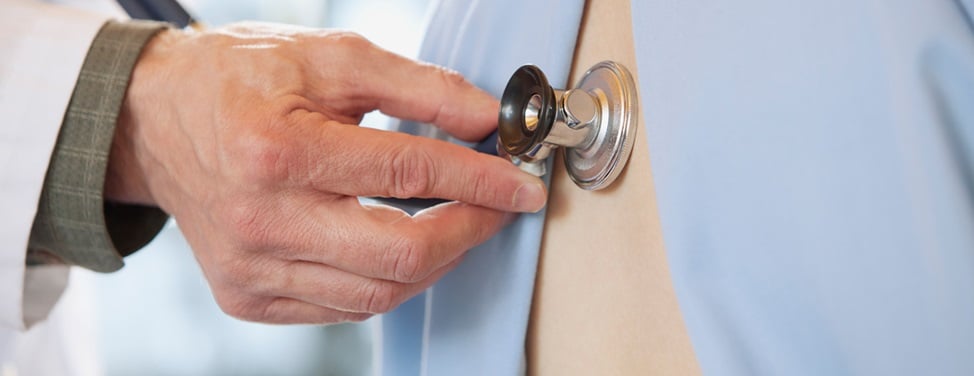
GERD in ILD Patients
Gastroesophageal reflux disease (GERD), also known as acid reflux, occurs when stomach contents back up – or reflux – into the esophagus. This can be due to weakening of the muscle where the esophagus meets the stomach, called the lower esophageal sphincter, or to problems with the contractions of the esophagus or stomach.
Many studies have shown a link between GERD and lung disease, including interstitial lung disease (ILD). The reason for this relationship is unclear. One theory suggests that reflux may play a role in the development of certain lung diseases. The link between ILD and GERD is an active area of research in the UCSF ILD Program.
Signs and symptoms
Common signs of GERD include:
- Heartburn (burning sensation in the center of the chest)
- Regurgitation of food and liquid
- Acid or sour taste in the throat
- Chest pain
- Cough
Less common symptoms include stomach pain, sore throat, hoarse voice, difficult or painful swallowing, recurrent pneumonia, asthma, chronic sinus infection or a sensation of a lump in the throat.
Diagnosis
In the general population, doctors can often diagnose GERD by taking a medical history and performing a physical examination. In patients with ILD, diagnosis is more complicated, as patients may have unusual symptoms or may lack symptoms. In ILD patients, additional testing is often needed to diagnose GERD.
In addition to taking a medical history and performing a physical exam, your doctor may recommend the following tests:
- Esophageal pH monitoring. This is the most direct way to measure the frequency of acid reflux. The test involves inserting a thin tube into the nose and down into the esophagus. The tube is left in for 24 hours while it measures how much stomach acid is getting into the esophagus.
You can eat and drink normally during this test. Most patients have very few side effects from the test, the most common being a sore throat. Once the test is complete, you'll need to return to have the tube removed. - Esophageal manometry. By measuring the muscle contractions of your esophagus, this test can tell your doctor if your lower esophageal sphincter is functioning properly. The test is often done at the same time as the initial placement of the 24-hour pH monitor.
- Upper GI series. Also called a barium swallow, this test can help your doctor determine if you have a swallowing problem that may mimic signs and symptoms of GERD. The test involves swallowing barium, a contrast material that shows up on X-rays, while a technician takes an X-ray series of your chest and neck.
- Endoscopy. This procedure allows us to see your esophagus with an endoscope, a camera mounted on a small, flexible tube. Endoscopy is performed by a gastroenterologist and is an outpatient procedure. The test reveals if there's any damage to the lining of the esophagus from chronic acid exposure.
Your doctor may recommend an endoscopy if you're experiencing painful swallowing, unexplained weight loss or bleeding (dark-colored stools or vomiting blood).
Treatment
The treatment for GERD depends on the severity of the disease. All patients should make changes to their diet and lifestyle to reduce the symptoms and complications of GERD.
It's important for patients to realize that we don't know if treating GERD influences the course of the underlying lung disease. However, patients should discuss treatment with their doctors, in order to avoid the long-term complications of uncontrolled GERD.
Lifestyle changes
Lifestyle modifications include:
- Weight loss
- Smoking cessation
- Raising the head of your bed 6 to 8 inches – you can use either blocks of wood under the legs of your bed, or a foam wedge under your mattress
- Avoiding foods that cause acid reflux: caffeine, chocolate, alcohol, peppermint, and fatty or spicy foods
- Avoiding large and late meals – don't lay down immediately after eating, and eat three or more hours before bedtime
Medications
Medications for Mild GERD include:
- Antacids. These provide short-term relief. Examples include Tums, Maalox and Mylanta.
- Histamine antagonists. These reduce acid production in the stomach, but are less effective than proton pump inhibitors, described below. Examples include ranitidine (Zantac), famotidine (Pepcid) and cimetidine (Tagamet).
Medications for moderate to severe GERD:
- Proton pump inhibitors (PPI). PPIs reduce acid production in the stomach. Examples include omeprazole (Prilosec), esopmeprazole (Nexium), lansoprazole (Prevacid), dexlansoprazole (Kapidex), pantoprazole (Protonix) and rabeprazole (Aciphex).
These medications are generally safe and well tolerated, but if taken for long periods of time they may increase the risk of pneumonia, gut infections or bone fractures.
If these treatments don't control your symptoms, your doctor may consider a different PPI or increase the dose of your PPI. In the most severe circumstances, your doctor may recommend surgical treatment for your GERD.
UCSF Health medical specialists have reviewed this information. It is for educational purposes only and is not intended to replace the advice of your doctor or other health care provider. We encourage you to discuss any questions or concerns you may have with your provider.















